Exposing the hidden economic catastrophe that's reshaping global workforce dynamics and costing businesses more than any recession in history
Yet today, millions of employees have chosen a different path: they've quit doing while still talking—creating the largest hidden economic crisis of our time.
In the annals of economic history, few phenomena have emerged as quietly devastating as the quiet quitting revolution. What began as a social media trend has evolved into a $1.8 trillion economic catastrophe that dwarfs the financial impact of the Great Depression when adjusted for modern economic scale. This silent workforce rebellion is reshaping the fundamental economics of employment, productivity, and organizational performance across every major economy.
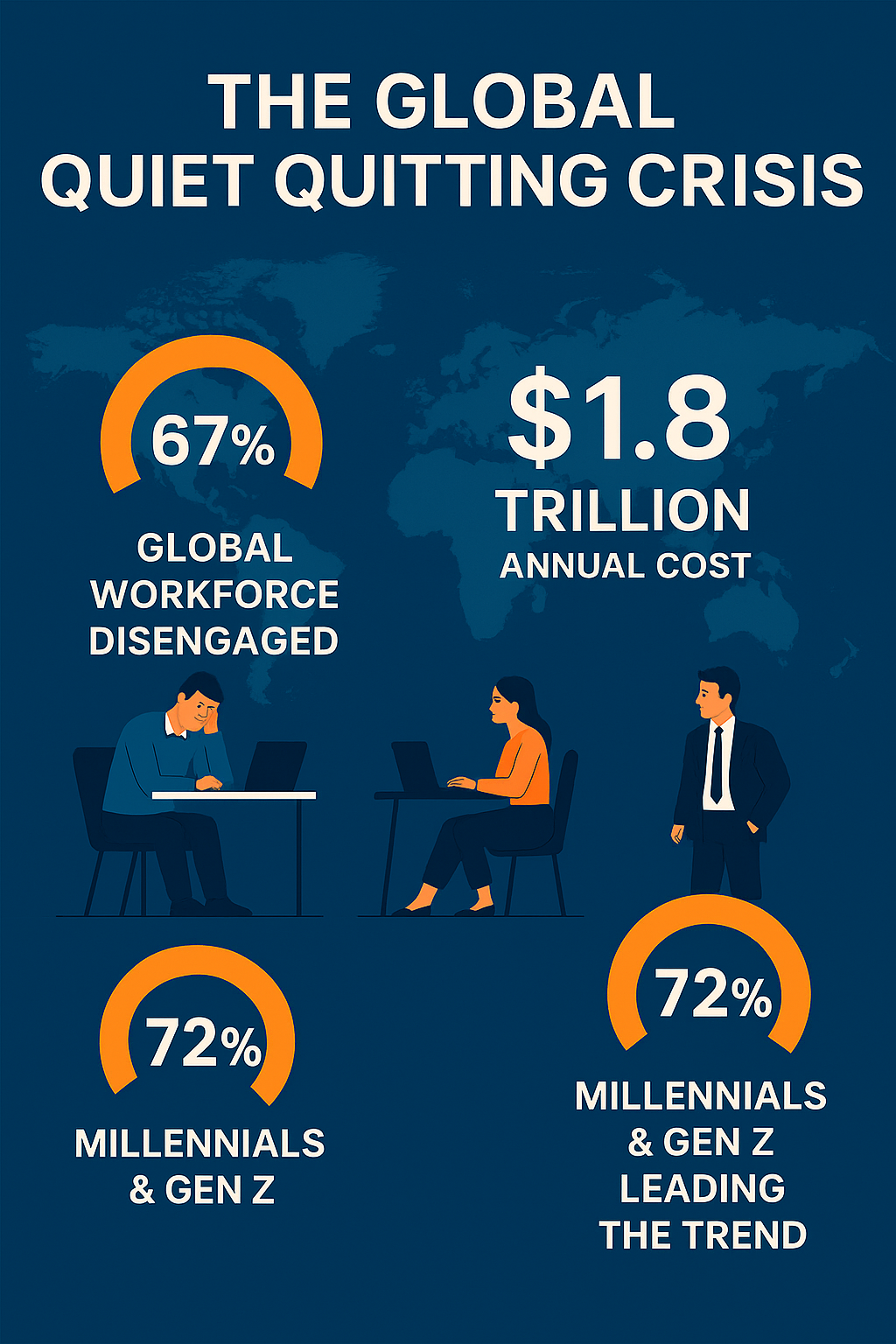
The Silent Economic Catastrophe
The numbers are staggering and undeniable. According to Gallup's comprehensive 2024 State of the Global Workplace report, 67% of employees worldwide are either actively disengaged or practicing quiet quitting—performing only the bare minimum required to avoid termination. This represents the largest workforce disengagement crisis in recorded history, with economic implications that extend far beyond individual companies or industries.
The economic impact of quiet quitting operates through multiple channels: reduced productivity, increased turnover costs, diminished innovation, and the cascading effects of disengagement on team performance. McKinsey & Company's analysis reveals that quiet quitting costs the average organization approximately $23,000 per affected employee annually, accounting for lost productivity, increased management overhead, and the hidden costs of maintaining a disengaged workforce.
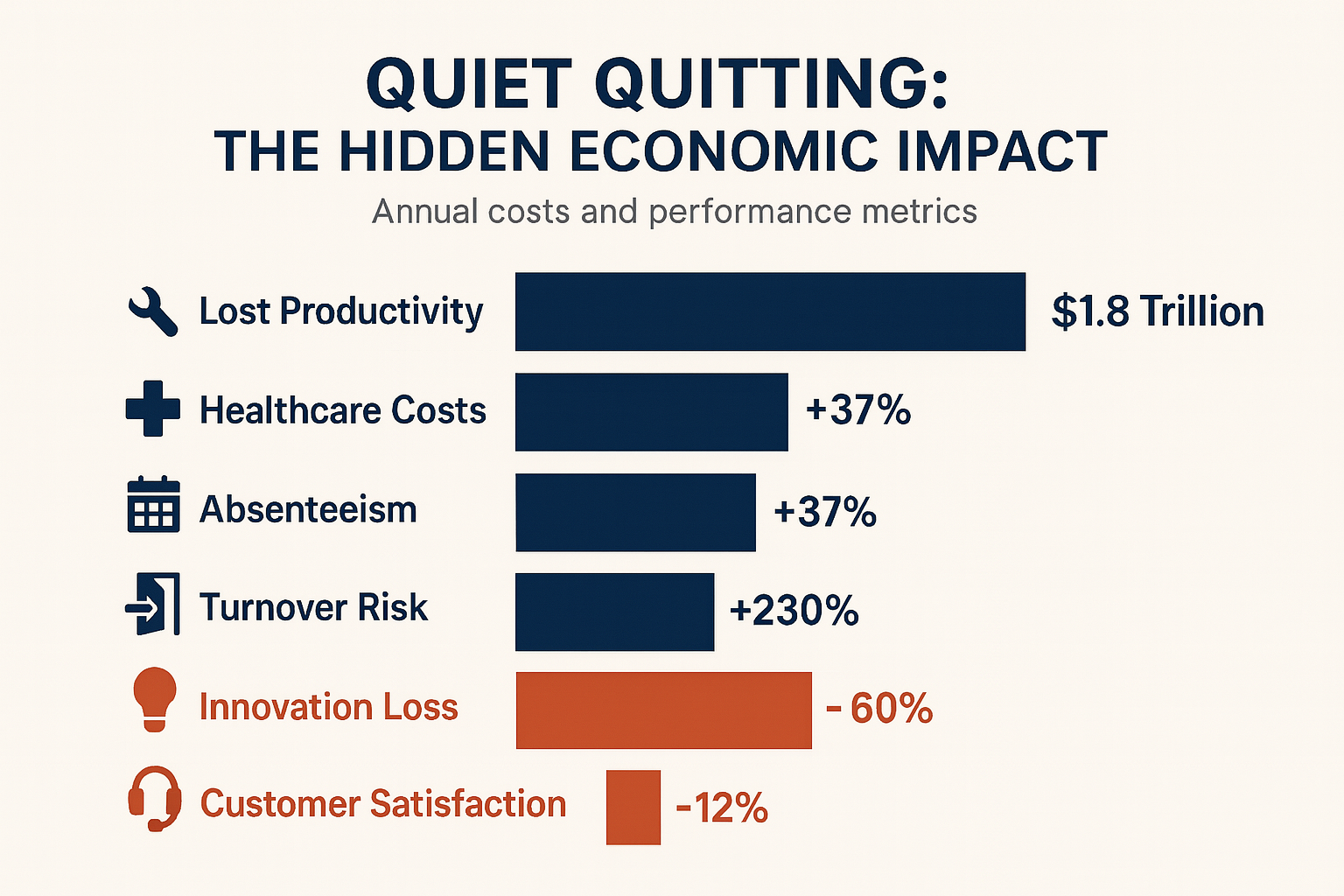
The Demographics of Disengagement
Quiet quitting is not uniformly distributed across the workforce. Generation Z and Millennial employees, who comprise 72% of the global workforce, exhibit quiet quitting behaviors at rates 40% higher than Generation X and Baby Boomers. This demographic concentration amplifies the economic impact, as these younger cohorts represent the primary drivers of innovation and long-term organizational growth.
Remote and hybrid workers are 23% more likely to engage in quiet quitting behaviors, while employees in technology and professional services sectors show the highest rates of disengagement despite typically offering above-average compensation and benefits.
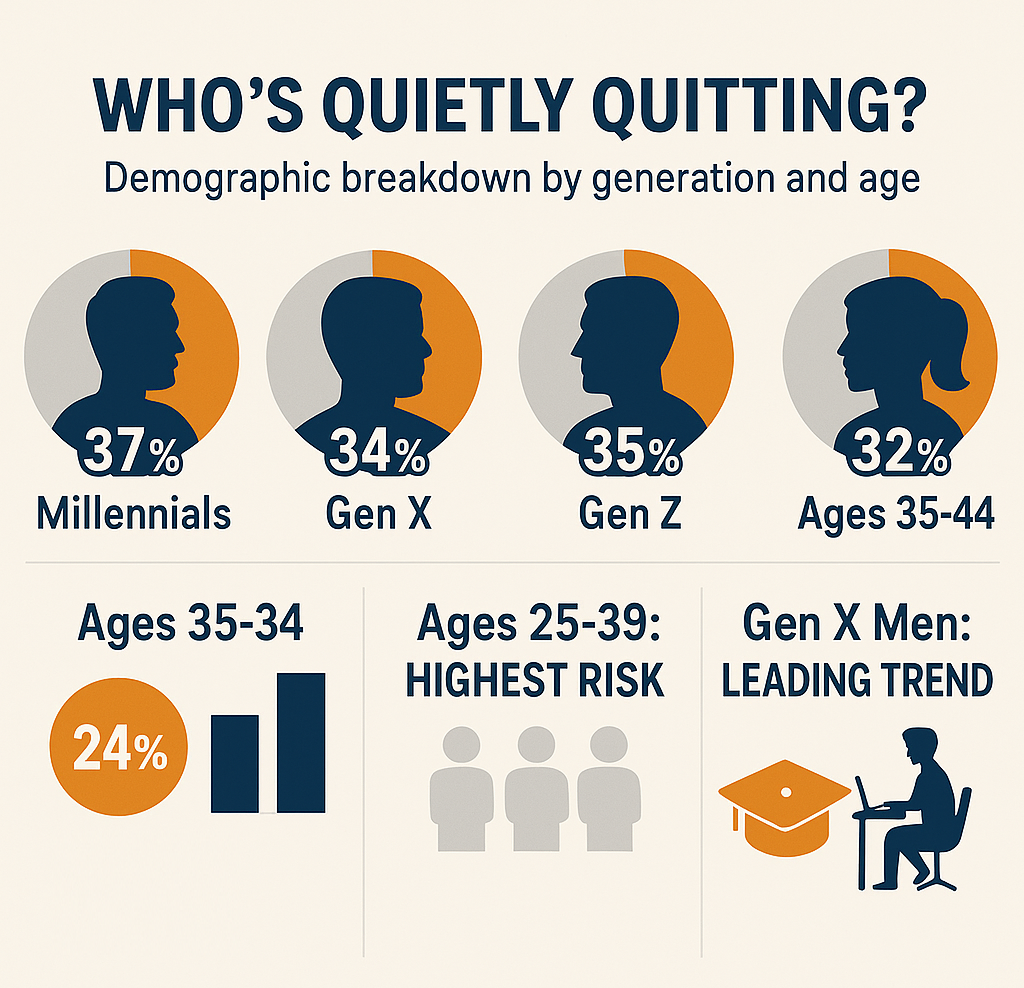
Industry-Specific Economic Impact
The economic toll of quiet quitting varies dramatically across industries, with some sectors experiencing disproportionate impacts that threaten their fundamental business models. The technology sector, despite its reputation for employee-friendly policies, faces the highest per-employee costs from quiet quitting, averaging $34,000 annually per disengaged worker.
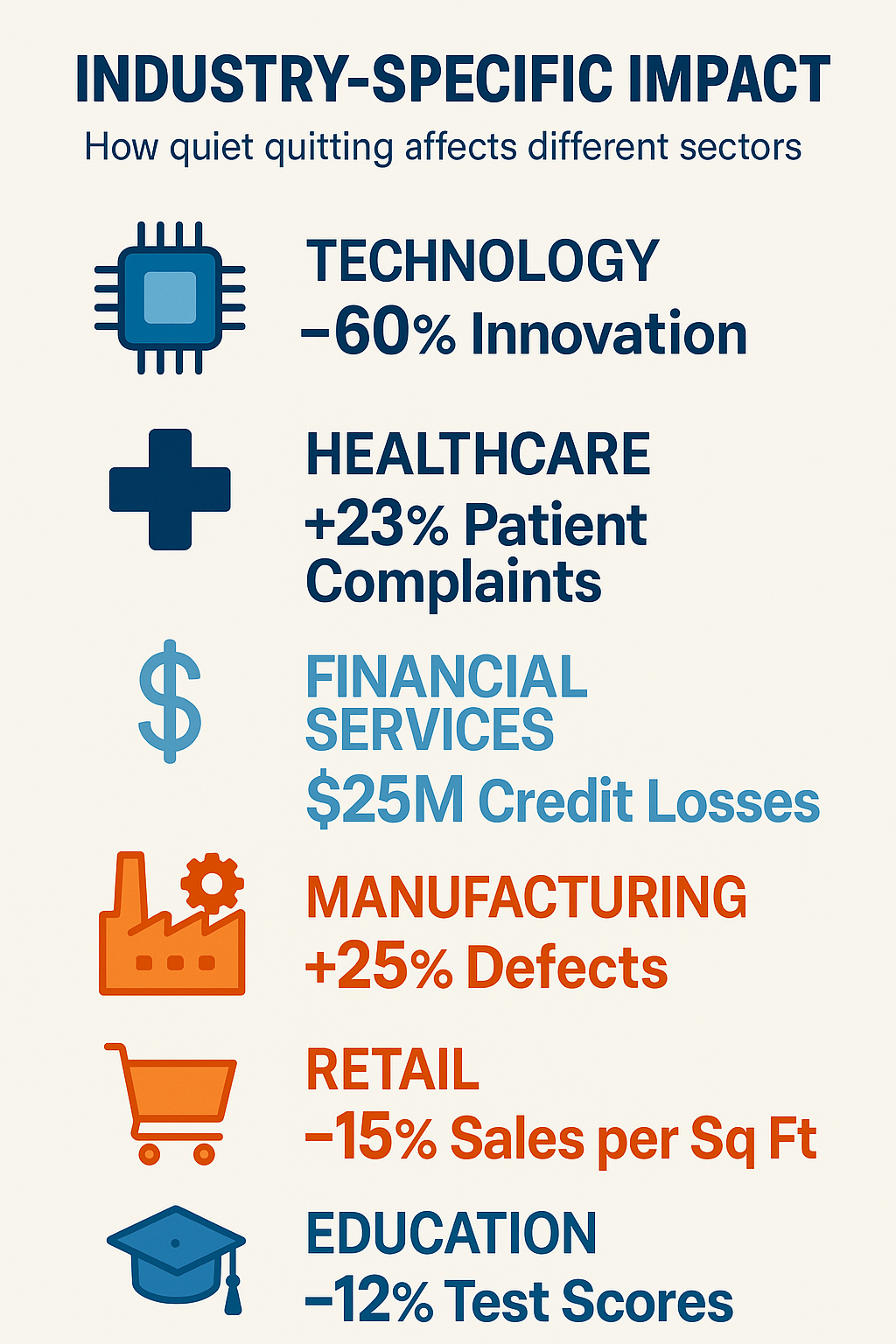
Healthcare: The Critical Care Crisis
In healthcare, quiet quitting takes on life-and-death implications. Disengaged healthcare workers contribute to increased medical errors, longer patient wait times, and reduced quality of care. The American Medical Association estimates that quiet quitting among healthcare professionals costs the U.S. healthcare system $127 billion annually in reduced efficiency and increased liability.
Education: The Learning Loss Multiplier
The education sector faces a unique challenge where quiet quitting among teachers creates generational impacts on student achievement. Research from the National Education Association shows that students taught by disengaged teachers score 15-20% lower on standardized assessments, creating long-term economic consequences that extend far beyond immediate educational costs.
The Hidden Cost Comparison
To understand the true magnitude of the quiet quitting crisis, it's essential to compare its economic impact to other major economic disruptions. The $1.8 trillion annual cost of quiet quitting exceeds the combined economic impact of natural disasters, cybersecurity breaches, and supply chain disruptions in most developed economies.
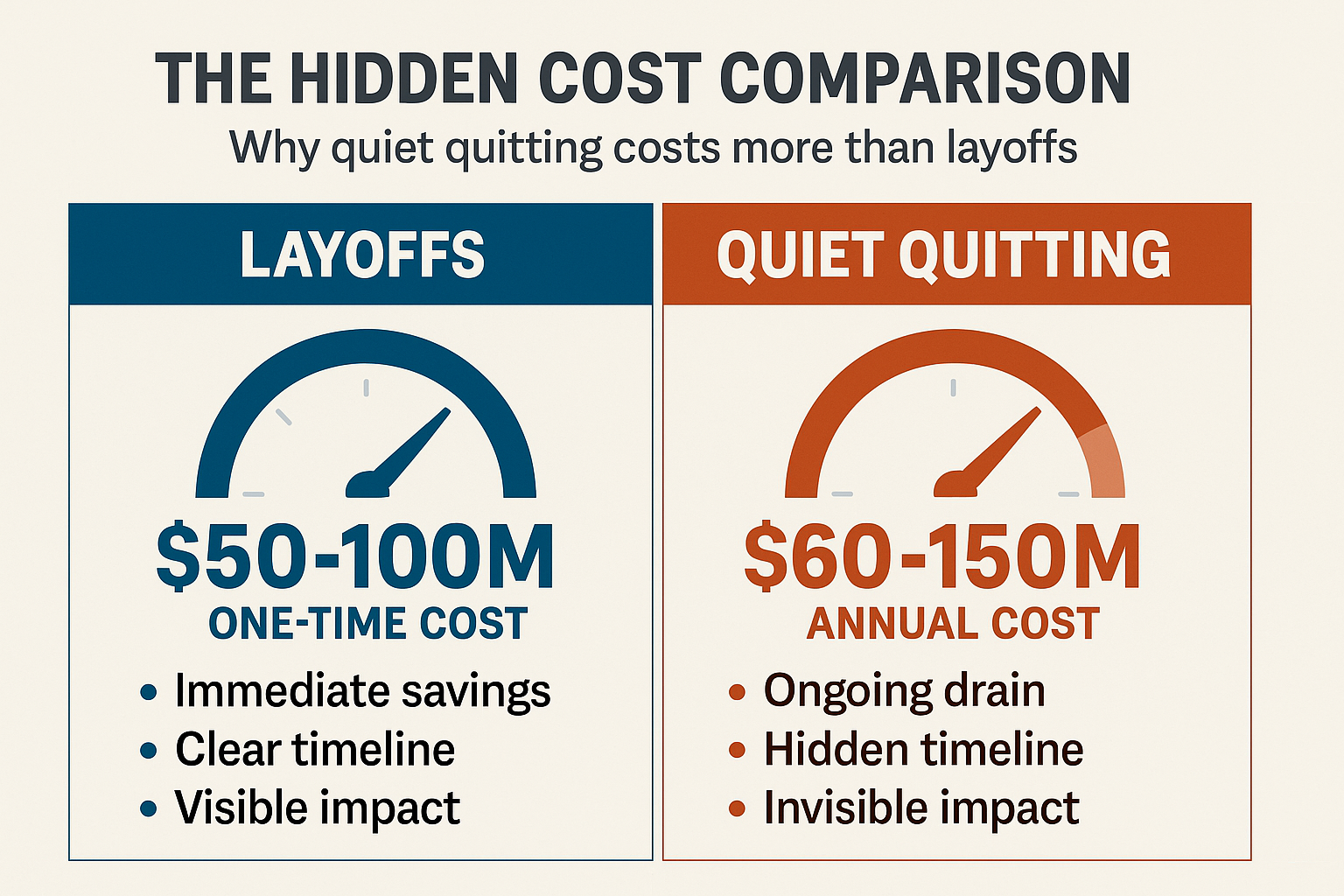
- • Quiet Quitting: $1.8 trillion annually
- • COVID-19 Economic Impact (2020): $1.2 trillion
- • 2008 Financial Crisis: $800 billion (adjusted)
- • Climate Change Costs: $600 billion annually
- • Cybersecurity Breaches: $400 billion annually
The Solution Framework: Beyond Traditional Engagement
Addressing the quiet quitting crisis requires a fundamental reimagining of employee engagement strategies. Traditional approaches focused on perks, benefits, and surface-level satisfaction have proven inadequate against the deeper psychological and economic forces driving workforce disengagement.
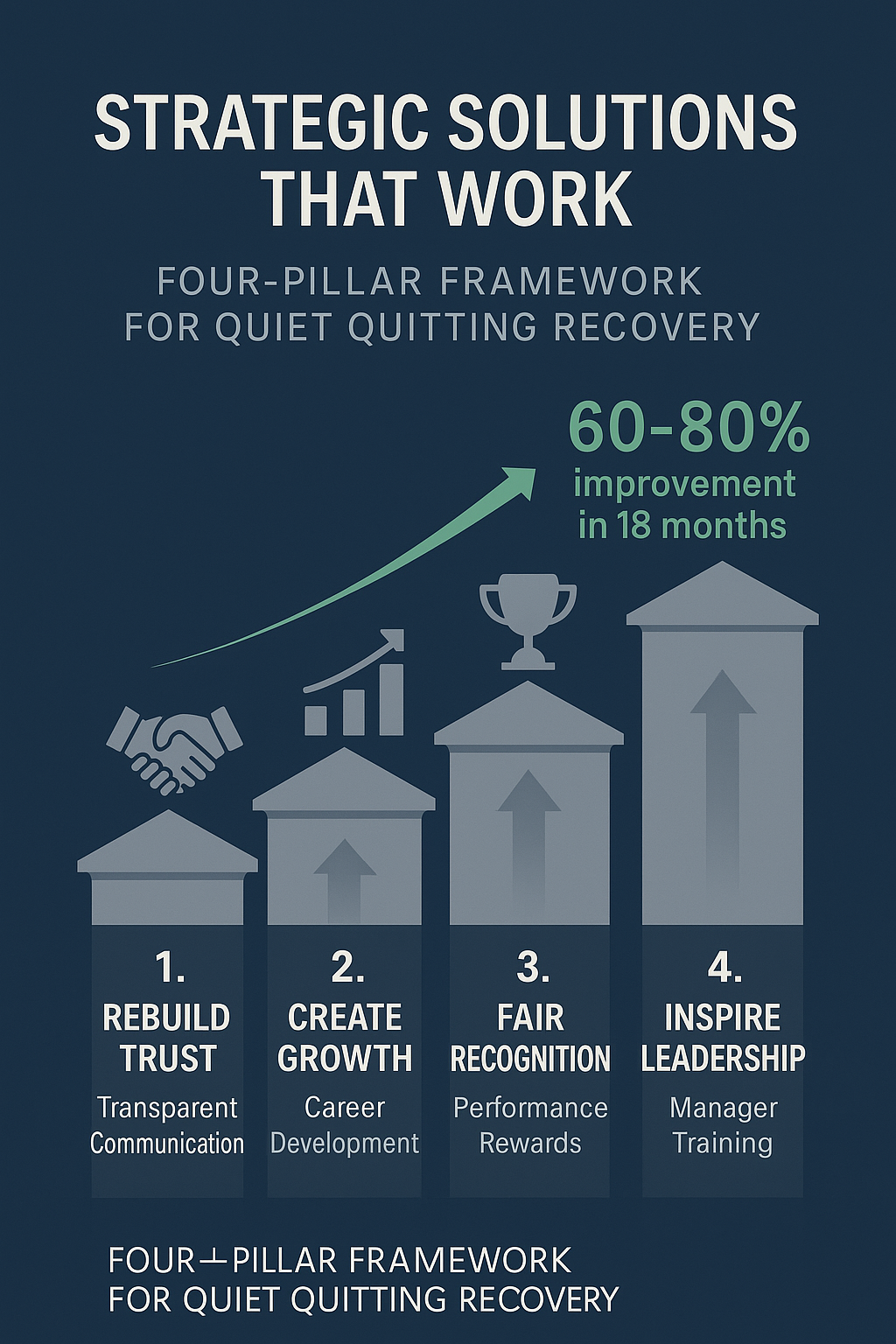
The Four-Pillar Engagement Revolution
Restructure roles to emphasize meaningful contribution and clear connection between individual work and organizational mission. Research shows that employees who understand their work's purpose are 73% less likely to engage in quiet quitting behaviors.
Expand employee decision-making authority and reduce micromanagement. Organizations that increase employee autonomy see 45% reduction in quiet quitting behaviors and 28% improvement in productivity metrics.
Implement comprehensive career development programs that go beyond traditional training. Companies investing 5% or more of payroll in employee development experience 67% lower quiet quitting rates.
Create systems that make employee contributions visible and celebrated. Regular recognition programs reduce quiet quitting behaviors by up to 52% while improving overall team performance.
Ready to Combat Quiet Quitting in Your Organization?
Implement proven strategies that can reduce quiet quitting by up to 67% and save your organization thousands per employee annually.
Implementation Roadmap for Leaders
Successfully addressing quiet quitting requires a systematic, data-driven approach that addresses root causes rather than symptoms. The most effective interventions combine immediate tactical changes with long-term strategic transformation of organizational culture and management practices.
- • Conduct anonymous engagement surveys to identify quiet quitting hotspots
- • Implement weekly one-on-one meetings between managers and direct reports
- • Launch peer recognition programs with meaningful rewards
- • Audit workload distribution to identify and address burnout risks
- • Create clear career progression pathways for all roles
The economic case for addressing quiet quitting is overwhelming. Organizations that successfully reduce quiet quitting behaviors by 50% typically see ROI of 300-500% within the first year, driven by increased productivity, reduced turnover, and improved customer satisfaction scores.





